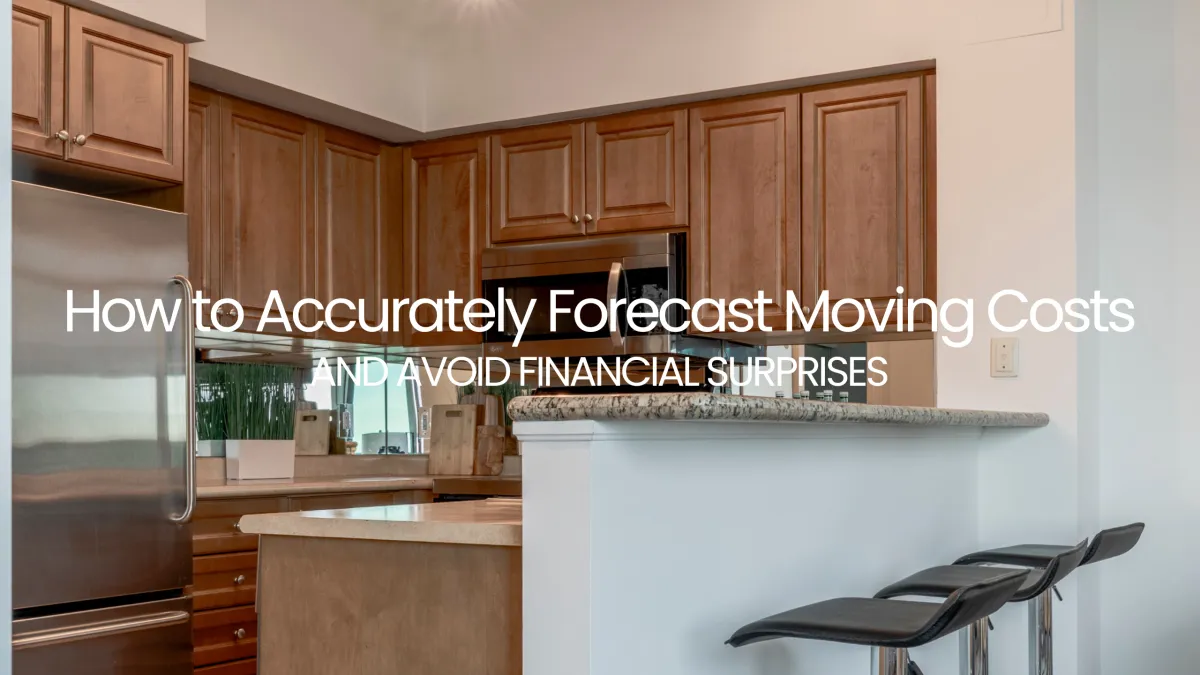
How to Forecast Moving Costs & Avoid Hidden Expenses (2025 Guide)
Moving to a new home, especially from a Toronto condo to a house in the suburbs, comes with many costs that you might not expect. Being prepared for these costs will help you avoid financial surprises and stress. Here’s everything you need to know about forecasting moving costs and planning your budget correctly.
1. Moving Supplies and Packing Services
Most people remember the big expenses, like hiring a moving truck or movers, but often overlook the smaller costs. Moving supplies, like boxes, tape, bubble wrap, and markers can add up quickly.
Actionable Steps:
- Estimate Supplies: Make a list of the estimated number of boxes and supplies you’ll need and compare prices at various stores or online.
- Check for Free Supplies: Ask local stores, friends, or online groups for free boxes.
- Consider Packing Services: If you’re short on time, packing services can save you stress, but remember to budget for them as they aren’t cheap.
2. Cleaning Costs
Cleaning your old condo and your new house can be time-consuming and exhausting. You might need professional cleaning services to ensure everything is spotless, which can be costly.
Actionable Steps:
- Get Quotes Early: Contact several cleaning services for quotes well before your move date.
- DIY Cleaning: Try to do as much cleaning yourself to reduce costs. Stock up on cleaning supplies and make a plan.
3. Utility Expenses
When moving, you will likely face various utility expenses, including installation fees for electricity, water, internet, and cable services. These costs can sneak up and add several hundred dollars to your moving budget.
Actionable Steps:
- Contact Providers: Reach out to current and future utility providers to understand any fees you might need to pay.
- Schedule Ahead: To avoid any gaps in service, schedule the activation and deactivation of utilities well in advance of your move.
4. Home Repairs and Maintenance
Moving into a new home often comes with the need for unexpected repairs or maintenance. Even if your new house seemed perfect during the inspection, small issues can still arise.
Actionable Steps:
- Create an Emergency Fund: Set aside a portion of your budget for unexpected repairs.
- Regular Inspections: After moving in, conduct regular inspections to catch small issues before they become big problems.
5. Miscellaneous Costs
Miscellaneous costs can include anything from pet care during the move, meals while you’re too busy to cook, to small everyday expenses that add up quickly.
Actionable Steps:
- Track Daily Spending: Keep track of your daily spending during the move to monitor these miscellaneous costs accurately.
- Budget for Extras: Add a small buffer to your budget to account for these unexpected expenses.
Additional Tips for Budgeting Your Move
Make a Comprehensive Moving Checklist
Create a detailed checklist that includes every task you need to complete before, during, and after your move. This list helps you ensure nothing is forgotten and allows you to anticipate costs more accurately.
Get Multiple Moving Quotes
When hiring a moving company, get at least three quotes from different companies. Be clear on what each quote includes to make a fair comparison. Remember to check reviews and get references to ensure you’re hiring a reliable service.
Plan for a Flexible Moving Date
If you can be flexible with your moving date, you might be able to save money. Movers often charge more on weekends and at the end of the month, so a mid-week, mid-month move could be cheaper.
Declutter Before Moving
The more stuff you move, the more expensive it will be. Use your move as an opportunity to declutter. Donate, sell, or dispose of items you no longer need. This can significantly reduce your moving costs.
Track All Expenses
Use a spreadsheet or an app to track all your moving-related expenses. This will not only help you stick to your budget but also give you a clear picture of where your money is going.
Understanding the Housing Market
Knowing the current housing market in Toronto and the suburbs you're considering will greatly help in budgeting. Houses in the suburbs can vary widely in price depending on the location, size, and various other factors.
Actionable Steps:
- Research Current Market Trends: Look up recent sales in your desired areas to get an idea of what you might need to spend.
- Consult a Local Real Estate Expert: An expert familiar with the Toronto to suburbs transition can provide valuable insights and up-to-date market conditions.
Conclusion
Moving from a condo in Toronto to a house in the suburbs is a big step and involves many hidden costs. By being thorough in your planning and budgeting, you can avoid financial surprises and make your move as smooth as possible. Remember to consider all aspects of the move, from supplies and cleaning to utility expenses and repairs. With diligent planning and a well-thought-out budget, your dream of living in a spacious suburban home can become a reality without breaking the bank.
Taking these steps will not only help you accurately forecast your moving costs but also ensure that every dollar is well spent, leading to a successful and less stressful relocation.
